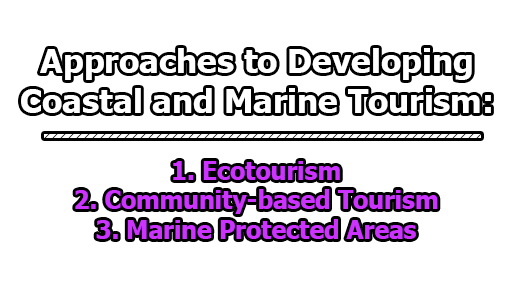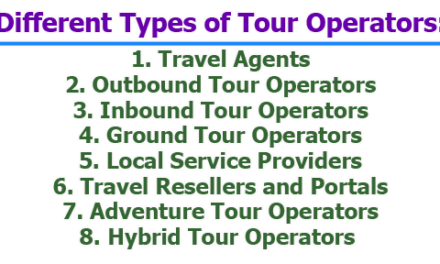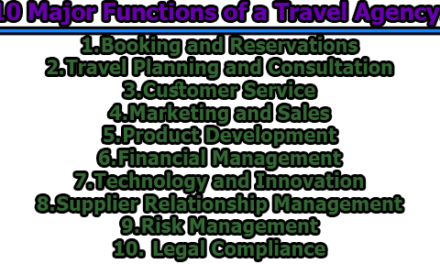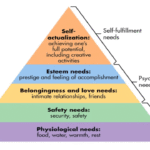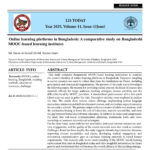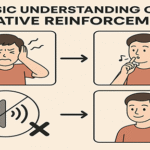Approaches to Developing Coastal and Marine Tourism:
Coastal and marine tourism (CMT) is a rapidly growing segment of the global tourism industry, driven by the increasing demand for nature-based tourism experiences. CMT includes a wide range of activities, such as sunbathing, swimming, diving, fishing, sailing, and wildlife viewing. According to the United Nations World Tourism Organization (UNWTO), CMT accounts for approximately 30% of global tourism revenue and has a significant impact on local economies and ecosystems. However, the development of CMT also poses significant challenges, such as environmental degradation, overexploitation of resources, and conflicts between different user groups. Therefore, it is essential to develop sustainable approaches to CMT that balance economic, social, and environmental objectives. This article examines different approaches to developing Coastal and marine tourism (CMT), including ecotourism, community-based tourism, and marine protected areas (MPAs). It also discusses the benefits and challenges of each approach and provides examples of successful CMT projects around the world.
- Ecotourism: Ecotourism is a form of tourism that emphasizes environmental conservation and education. It involves visiting natural areas, such as national parks, forests, and wildlife reserves, with the aim of learning about and appreciating the natural environment. Ecotourism can provide economic benefits to local communities and promote environmental awareness and conservation.
In the context of CMT, ecotourism can be a sustainable approach to promoting tourism while protecting coastal and marine environments. It can involve activities such as birdwatching, snorkeling, and kayaking, which allow visitors to experience the natural beauty of coastal and marine environments without causing damage. Ecotourism can also involve educational activities, such as guided tours and lectures, which help visitors to learn about the ecological importance of these environments.
One example of a successful ecotourism project is the Ningaloo Reef in Western Australia. The Ningaloo Reef is a World Heritage-listed site and one of the largest fringing coral reefs in the world. The reef is home to over 500 species of fish and 250 species of coral, as well as turtles, dolphins, and whales. The area attracts thousands of visitors each year, many of whom participate in ecotourism activities such as snorkeling, diving, and whale watching. The local community has worked together with the government and conservation organizations to develop sustainable tourism practices that minimize the impact on the reef while providing economic benefits to the community.
However, ecotourism also has some limitations as a CMT approach. It may be difficult to balance the demands of visitors with the need to protect sensitive ecosystems, and there is a risk that ecotourism can become too commercialized and lose its focus on environmental conservation. Additionally, ecotourism may not be suitable for all types of coastal and marine environments, such as heavily urbanized or industrialized areas.
- Community-based Tourism: Community-based tourism (CBT) is a form of tourism that involves local communities in the planning, development, and management of tourism activities. CBT can provide economic benefits to local communities and promote cultural preservation and sustainability. In the context of CMT, CBT can involve activities such as cultural tours, traditional handicraft demonstrations, and homestays with local families.
CBT can be a sustainable approach to developing CMT because it empowers local communities to take control of tourism development and ensures that tourism benefits are distributed more evenly among the community. Additionally, CBT can help to promote cultural understanding and preservation, which can be important for coastal and marine communities that have unique cultural traditions and practices.
One example of a successful CBT project is the Guna Yala Islands in Panama. The Guna Yala Islands are a group of islands off the Caribbean coast of Panama that are inhabited by the indigenous Guna people. The Guna people have a strong cultural identity and have managed to preserve their traditional way of life despite increasing pressure from modernization and tourism development. In recent years, the Guna people have developed a CBT program that allows visitors to experience their culture and way of life while providing economic benefits to the community. Visitors can participate in activities such as traditional fishing, weaving, and cooking, and can stay in local homes or eco-lodges run by the community.
However, CBT also has some challenges as a CMT approach. It may be difficult to ensure that tourism benefits are distributed fairly among the community, and there is a risk of cultural commodification or exploitation. Additionally, CBT may not be suitable for all types of communities, particularly those that are not interested in or able to participate in tourism development.
- Marine Protected Areas: Marine protected areas (MPAs) are designated areas in coastal and marine environments that are managed for conservation and sustainable use. MPAs can help to protect sensitive marine ecosystems and biodiversity, while also providing opportunities for tourism and recreation. In the context of CMT, MPAs can involve activities such as diving, snorkeling, and wildlife viewing, which allow visitors to experience the natural beauty and diversity of marine environments.
MPAs can be a sustainable approach to developing CMT because they provide a framework for managing tourism activities in a way that minimizes environmental impact and promotes conservation. MPAs can also provide economic benefits to local communities through tourism and recreational activities.
One example of a successful MPA project is the Great Barrier Reef Marine Park in Australia. The Great Barrier Reef is one of the largest coral reef systems in the world and is home to a wide range of marine life, including over 1,500 species of fish and 600 species of coral. The Marine Park was established in 1975 and is managed by the Australian government in partnership with local communities and stakeholders. The Marine Park provides a framework for managing tourism activities in a way that protects the reef while also providing economic benefits to the community.
However, MPAs also have some limitations as a CMT approach. They may be difficult to establish and manage, particularly in areas where there is conflicting use or resource demand. Additionally, MPAs may not be suitable for all types of marine environments, particularly those that are heavily degraded or subject to pollution and other threats.
In conclusion, there are several approaches to developing sustainable coastal and marine tourism, including ecotourism, community-based tourism, and marine protected areas. Each approach has its benefits and challenges, and the suitability of each approach will depend on the specific context and objectives of tourism development. Ultimately, the key to developing sustainable coastal and marine tourism is to balance economic, social, and environmental objectives in a way that ensures the long-term viability of tourism while also protecting the natural and cultural resources of the area.
References:
- Buckley, R. (2012). Sustainable tourism: research and reality. Annals of Tourism Research, 39(2), 528-546.
- Gössling, S. (2017). Tourism and water: interactions, impacts, and challenges. In Handbook of Tourism and the Environment (pp. 127-140). Routledge.
- Honey, M. (2008). Ecotourism and sustainable development: who owns paradise?. Island Press.
- Lück, M., & Gollan, B. (2007). Marine wildlife tourism: impacts, management, and planning. CABI.
- McCool, S. F., & Moisey, R. N. (2008). Tourism, recreation, and sustainability: linking culture and the environment. CABI.
- (2005). Marine and coastal ecosystems and human well-being: a synthesis report based on the findings of the Millennium Ecosystem Assessment. United Nations Environment Programme.
- (2019). UNWTO Tourism Highlights, 2019 Edition. United Nations World Tourism Organization.
- Wearing, S., & Neil, J. (2009). Ecotourism: impacts, potentials, and possibilities. Elsevier.
- Weaver, D. (2011). Sustainable tourism: theory and practice. Elsevier.

Assistant Teacher at Zinzira Pir Mohammad Pilot School and College

